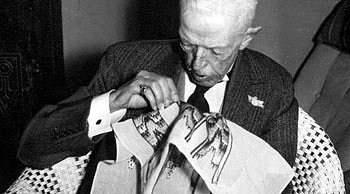Cart
Discount:
0.00 USD
Embroidery
"Embroidery in various forms has existed as long as man has been able to produce fabric. Today embroidery is practiced all over the world, but it is believed that it has its origin in China and the Near East. The word embroidery comes from the French word broderie meaning embellishment".
Hazara Embroidery
The art of embroidery is deeply rooted in the cultural history of Afghanistan and is traditionally done by women and girls. It is typically done on heavy silk, wool, or cotton fabric and the designs vary depending on the region.
The Hazaras from central Afghanistan have a rich culture and history, they are also known for their working embroidery on cotton or silk material enlivened by very fine lines of cross or herringbone stitch. Hazara embroidery tends to be a form of counted thread work rather than freestyle embroidery. It is generally very fine and precise. Traditional Hazara/ Hazaragi embroidery is a rich artistic tradition with a centuries-old history that has been passed down by mothers to their daughters & granddaughters through generations, the rich diversity of patterns and the multitude of color combinations sparking off ideas how to make them part of one’s creation.
There are various types of Hazara embroideries. Especially famous are the giraf, khamak & qabtumar embroideries of the Hazara women from Bamiyan in the center of the country, and from the provinces of Ghazni and Daikundi. Giraf (cross-stitch) consists of multiple square stitches, resembling the cross-stitch, and is often used to make elaborate and dense patterns on the borders. These forms of embroidery are primarily used on home décor items such as bedspreads, curtain borders, and wall hangings. Qabtumar (brick stitch) is also known as Gulatlaz which is characterized by the use of bright threads to create geometric patterns in the form of pointillism. Black thread is often used to accentuate colors and patterns. Gulatlaz is one of the most difficult forms of embroidery, it is more intricate than khamak. Khamak is one of the most intricate forms of embroidery in the world and requires the use of fine silk threads. It is the hallmark of Hazara handicrafts. Khamak is used on dresses, scarves. Embroidery patterns are traditionally stitched on dresses, scarfs, shawls, curtains, cushions, and hats (cap). You can read more about Hazaragi Embroidery here.
Picture Source: Kamila Habib

Swedish Embroidery
In Sweden, the earliest finds of embroidery are from the period around the 9th and 10th centuries, which coincides with the period that we call the Viking Age. It is however two centuries later, around year 1000, that the development of embroidery in Europe really takes off. In this period the Christian church really started to grow and royalty gained power in many countries. To demonstrate their power and wealth, richly decorated garments and ornaments in the form of wall hangings and tablecloths were commissioned.
What we liked the most knowing that embroidery has historically been done mainly by women, however, in Sweden this has not prevented some famous men from finding rest and relaxation in embroidering, or "painting with thread" as some call it. "Actor Henry Fonda revealed in an interview that his favorite hobby was embroidering. Between shots when filming, he sat and embroidered satin stitch to relax and pass the time. Another gentleman embroiderer was Gustaf V, king of Sweden between 1907-1950. He relaxed by embroidering flame stitch. It was a very unusual employment among men of their generation, but this did not stop Cowboy Henry's nor King Gustaf's devotion to the noble art of embroidery. They are both evidence that embroidery is something for everyone; young or old, poor or rich, famous or unknown - the only thing needed is a needle, thread, fabric, and a spare moment". You can read more here
Picture Source: Alingsås Museum


Palestinian Embroidery
Traditional Palestinian embroidery is called Tatreez. It is a skill many women in Palestine learn as children and practice into adulthood, both to decorate their own homes and also for income generation. Embroidery patterns are traditionally cross-stitched on dresses, headdresses, scarfs, shawls, and wall arts.
The Palestinian folk arts have a rich and fascinating history. Silk thread and embroidery, together with an expanding repertoire of symbols, are known to have made their way from China to the Holy Land along the Silk and Spice Routes before being introduced to Europe by Christian saints, holy men, and pilgrims. Mainly using cross-stitch, Palestinians have continued to embroider their traditional motifs, giving them their own appellations and developing their own terminology. As clothing was of prime importance, Palestinian women wanted something personal, distinctive, and handmade. By adopting the traditional styles and motifs of her area, a woman expressed her wish to identify and be identified with her cultural roots- Laila El-Khalidi
Picture source: Inaash